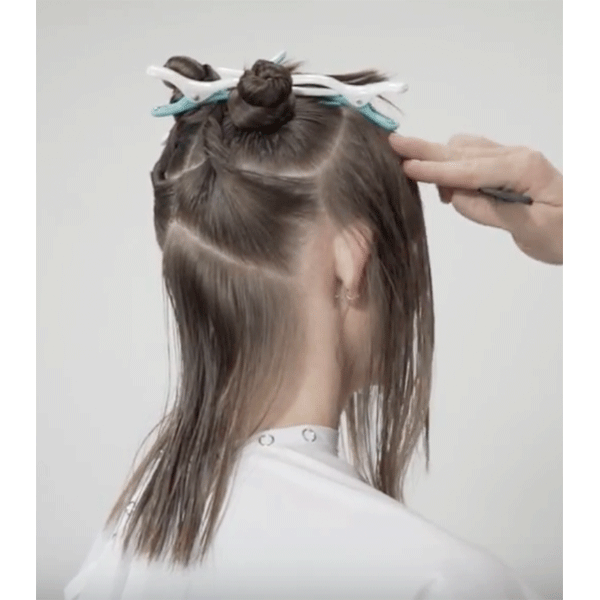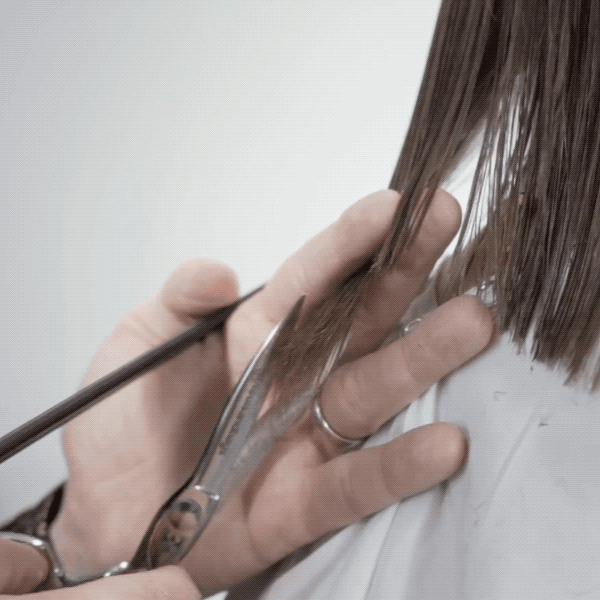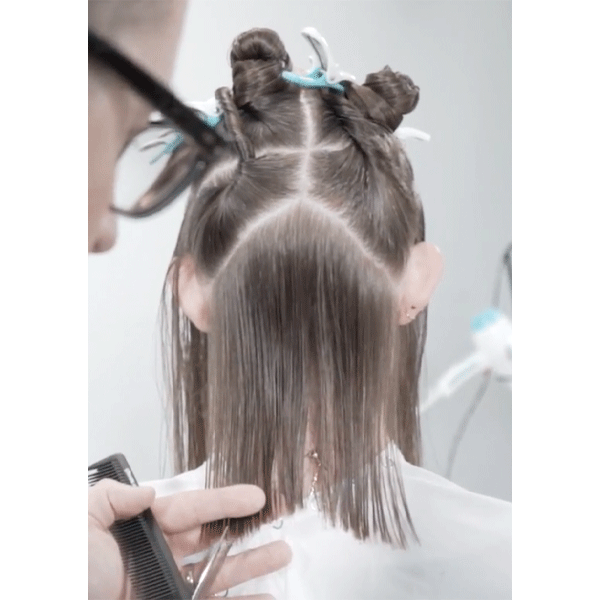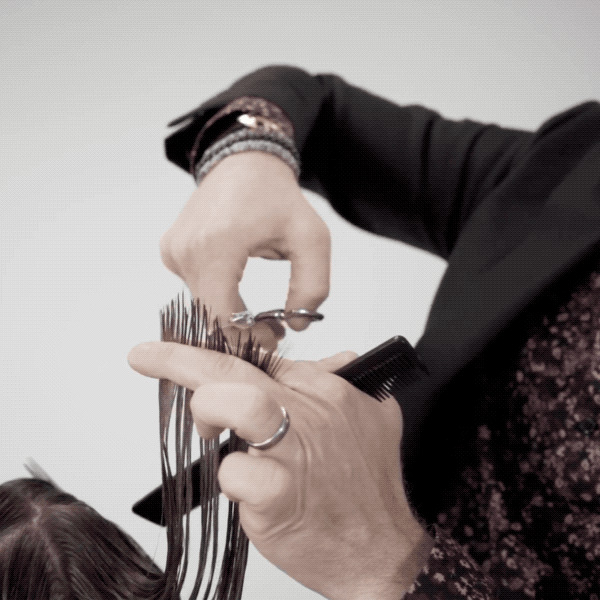3 Cutting Techniques for Softer Texture
Create effortless, lived-in texture using these three cutting techniques.
Have a client requesting a cut with softness and movement, but doesn’t want to commit to a ton of layers? We had Moroccanoil® Academy Educator Tab Salsman (@tabcutshair) stop by The BTC House in West Hollywood to break down three cutting techniques that result in effortless, lived-in texture. Scroll down for all three, plus Tab’s preferred sectioning method. Want to learn more from Moroccanoil® Educators? Click here to check out upcoming classes at the Moroccanoil Academy in NYC.

Products Used
Isolate Interior Sections

Tab’s motto: Work smarter NOT harder. Create sections before you start and give them a specific purpose, he explains. This way, there is no need to go back and retexturize once the hair is dry. (Don’t worry, this can TOTALLY be done if needed, but this will at least alleviate most of it!) To create soft texture, Tab prefers this sectioning:
- Isolate the front hairline.
- One middle part from the forehead to the top of the occipital bone.
- Forward diagonal partings from the top of the occipital bone to the hairline.
- Create FOUR interior sections going off of the center part:
- Two sections right above the occipital bone.
- Two sections at the crown.
TIP: Prep the hair with Moroccanoil® Treatment Light and Moroccanoil® Hydrating Styling Cream to keep strands smooth and retain moisture throughout the haircut.
Cutting the Perimeter

To ensure the entire haircut blends together, point cut the perimeter at an angle, creating an inverted V shape, with the hair gradually getting longer towards the face. Join the back section to the isolated hairline so that the perimeter is connected. Point cutting at an angle, as opposed to parallel, will give the perimeter texture and allow it to blend with interior layers.

Use Slide Cutting to Remove Weight

Once the perimeter has been established, bring down the two sections above the occipital bone, one at a time. Create small subsections, pinching the bottom of each section to retain tight tension and start slide cutting about an inch and half above the perimeter.
The size of the subsections can vary, depending on the desired result:
- Smaller subsections = a softer, more piece texture.
- Wider subsections = more fringe, fuzzier effect.
TIP: Be aware of over texturizing, After initially slide-cutting the sections, move the hair with your fingers to see where the hair remains dense. The fix for over-texturizing is creating a blunter baseline, which will remove the softness and movement of the haircut.
Square Graduation = Interior Movement

Use a horizontal parting to create four subsections at the crown. Then, take a vertical, about an inch to an inch and a half in width, 45 degrees up from the head. Use the shortest piece from the previous section to determine the length. To avoid creating a shelf of layers, this section should lay softly over the previously cut section. Use a rough point cutting technique by pumping your thumb to notch the hair.
Click here to see the upcoming classes available at the Moroccanoil® Academy in NYC
More from
Moroccanoil®
-
Demi-Permanent Color
Color Calypso Demi-Permanent Cream Color
-
Haircare
Moroccanoil® Treatment Purple
-
Gray
Brassy Grown-Out Beige To Natural Gray
-
Brunette
Backlit Golden Brunette
-
Blonde
Sandy Biscoff Blonde
-
Blowouts
Bob Styling Guide: 5 Ways To Style Short Hair
-
Haircare
Moisture Repair Shampoo
-
Blonde
Old Money Blonde Bob
-
Blonde
The Biggest Hair Color Trends of 2024
-
BTC Hair Trend Report
The Biggest Haircut Trends of 2024
-
Conditioners
Frizz Control Shampoo & Conditioner
-
Brunette
8 Brunette Formulas To Screenshot Now
-
Hair Color
Moroccanoil® Chocolates
-
Balayage
5 Tips For A Soft, “Expensive” Face-Frame
-
Celebrity Color
Meghann Fahy’s Strawberry Blonde
-
Awards Shows
The Best Celebrity Hair Colors & Formulas From The 2024 Golden Globes
-
Balayage
How To Turn A Brassy Lift Into A Brunette Balayage
-
BTC Hair Trend Report
Quiet Luxury Blonde: The “Old Money” Trend Explained
-
BTC Hair Trend Report
The Biggest Haircut Trends of Fall & Winter 2023
-
BTC Hair Trend Report
Your Guide To Fall & Winter 2023’s Hair Color Trends
-
Blonde
When To Formulate With Ash Gold Toners
-
Business
Dear Stylists, Why Continued Education Is Your Most Important Investment
-
Bobs
The ’90s Bob: How To Cut & Style This Trending Haircut
-
Business
Instagram for Hairdressers: 8 Ways To Grow Your Business








